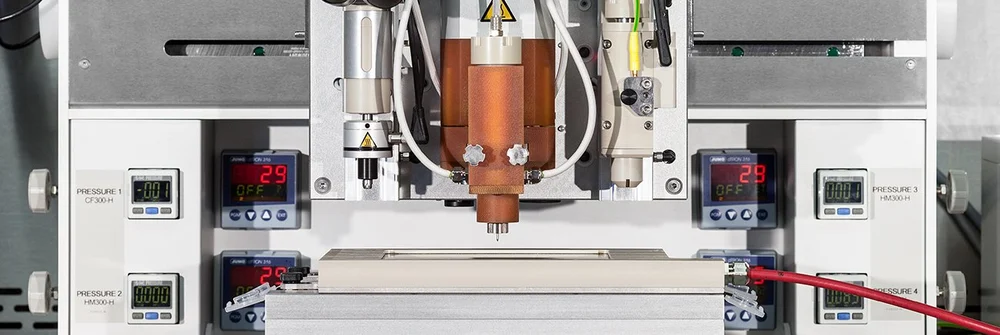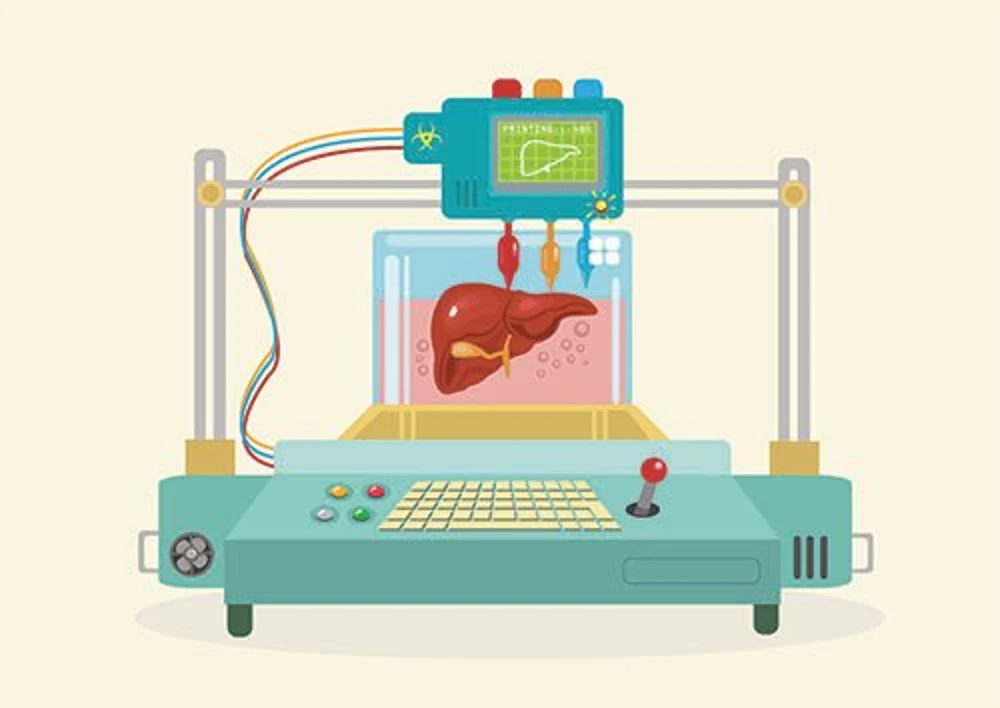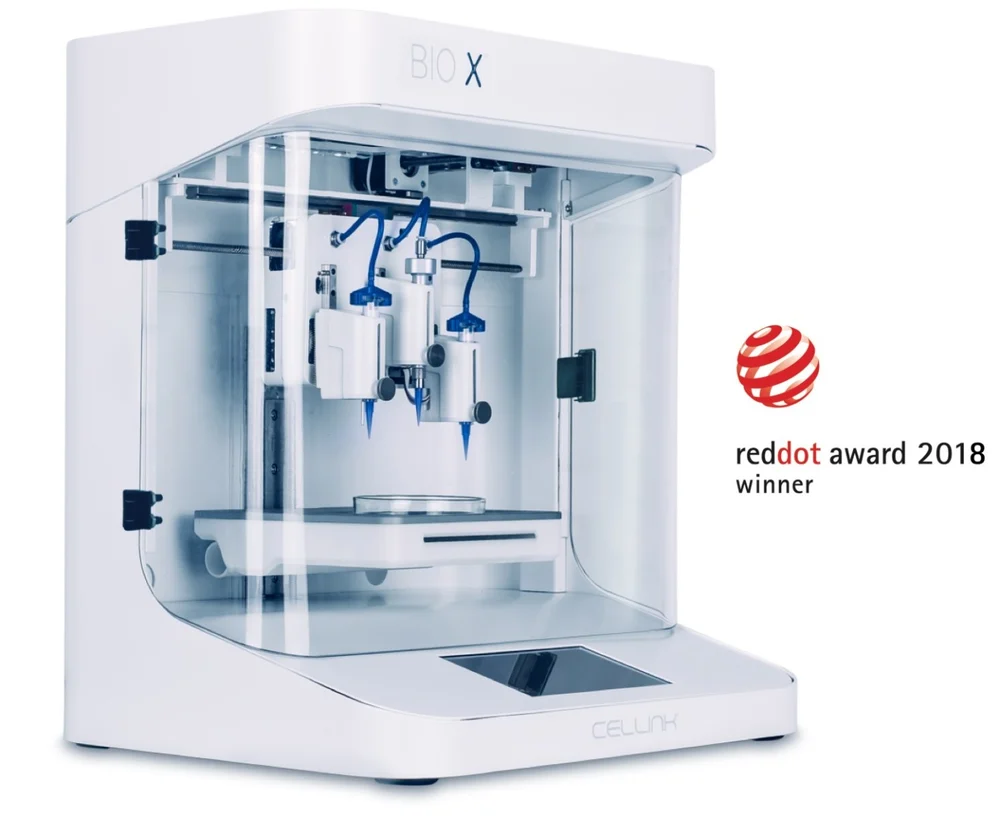3D printing interest in and biomedical demand for bioprinting continue to increase. In this article, we take a look at what bioprinting is and why it’s important.
What Is 3D Bioprinting?

Bioprinting is an additive manufacturing process where biomaterials such as cells and growth factors are combined to create tissue-like structures that imitate natural tissues.
The technology uses a material known as bioink to create these structures in a layer-by-layer manner. The technique is widely applicable to the fields of medicine and bioengineering. Recently, the technology has even made advancements in the production of cartilage tissue for use in reconstruction and regeneration.
In essence, bioprinting works in a similar way to conventional 3D printing. A digital model becomes a physical 3D object layer-by-layer. In this instance, however, a living cell suspension is utilized instead of a thermoplastic or a resin.
For this reason, in order to optimize cell viability and achieve a printing resolution adequate for a correct cell-matrix structure, it’s necessary to maintain sterile printing conditions. This ensures accuracy in complex tissues, requisite cell-to-cell distances, and correct output.
The process principally involves preparation, printing, maturation, and application. This can be summarized in the three key steps:
- Pre-bioprinting involves creating the digital model that the printer will produce. The technologies used are computed tomography (CT) and magnetic resonance imaging (MRI) scans.
- Bioprinting is the actual printing process, where bioink is placed in a printer cartridge and deposition takes place based on the digital model.
- Post-bioprinting is the mechanical and chemical stimulation of printed parts so as to create stable structures for the biological material.
How Does Bioprinting Work?

Several bioprinting methods exist, based on either extrusion, inkjet, acoustic, or laser technologies. Despite the various types, a typical bioprinting process has a more-or-less standard series of steps:
- 3D Imaging: To get the exact dimensions of the tissue, a standard CT or MRI scan is used. 3D imaging should provide a perfect fit of the tissue with little or no adjustment required on the part of the surgeon.
- 3D Modeling: A blueprint is generated using AutoCAD software. The blueprint also includes layer-by-layer instruction in high detail. Fine adjustments may be made at this stage to avoid the transfer of defects.
- Bioink Preparation: Bioink is a combination of living cells and a compatible base, like collagen, gelatin, hyaluronan, silk, alginate or nanocellulose. The latter provides cells with scaffolding to grow on and nutriment to survive on. The complete substance is based on the patient and is function-specific.
- Printing: The 3D printing process involves depositing the bioink layer-by-layer, where each layer has a thickness of 0.5 mm or less. The delivery of smaller or larger deposits highly depends on the number of nozzles and the kind of tissue being printed. The mixture comes out of the nozzle as a highly viscous fluid.
- Solidification: As deposition takes place, the layer starts as a viscous liquid and solidifies to hold its shape. This happens as more layers are continuously deposited. The process of blending and solidification is known as crosslinking and may be aided by UV light, specific chemicals, or heat (also typically delivered via a UV light source).
Why Is Bioprinting Important?

The greatest importance of bioprinting lies in the resulting tissue-like structures that mimic the actual micro- and macro-environment of human tissues and organs. This is critical in drug testing and clinical trials, with the potential, for example, to drastically reduce the need for animal trials.
When living tissues and organs need not come from humans, this budding technology offers other massive opportunities. One example is testing treatment for diseases using artificially affected tissues.
The process could also eradicate the headaches associated with organ donation and transplantation. Apart from the lack of available organs, the entire process is criticized from a moral and ethical perspective.
Organ replacement is the main objective, but tissue repair is also possible in the meantime. With bioink, it’s much easier to solve problems on a patient-specific level, promoting simpler operations.
Applications

Here are a few of the main application areas of bioprinting:
- Artificial organs are one of the greatest drivers of the technology due to the high rise of vital organ failure. Availability of 3D printed organs helps to solve organ-related issues faster and quicker, which is important to patients, their families, and healthcare systems.
- Development of tissues for pharmaceutical testing, when 3D printed, is a more cost-effective and ethical option. It also helps in identifying side effects of drugs and allows recommended drugs to be administered to humans with validated safe dosages.
- Cosmetic surgery, particularly plastic surgery and skin grafting, also benefits from the technology. In this particular application, bioprinted skin tissue could be commercialized. Some 3D printed tissues are already being bioprinted for research on therapeutic purposes.
- Bone tissue regeneration as well as prosthetics and dental applications.
There are various other uses and applications of bioprinting, including producing foodstuffs such as meat and vegetables.
Conclusion

From the list of applications, it’s pretty clear that bioprinting will only continue to develop. It will surely justify its value both from a moral and ethical perspective, which is always a major challenge in technologies associated with nature. Let’s see where the technology is in a few more years!
Source: https://all3dp.com/2/what-is-3d-bioprinting-simply-explained/